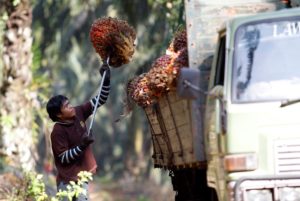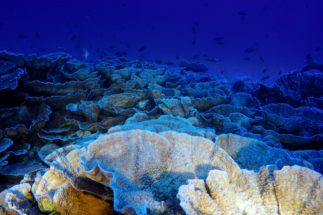Carlos Márquez Oyorzábal was killed on the night of Saturday 3 April 2021. A group of men intercepted him a road in the Sierra de Guerrero, in southern Mexico, as he rode his all-terrain vehicle with two of his sons after buying groceries. Before releasing the boys, they forced them to watch their father being tortured and murdered.
Carlos Márquez was 43 years old and had four children. He was municipal commissioner of Las Conchitas, a small town in the municipality of San Miguel Totolapan, a mountainous area where trees still stand despite the expansion of poppy crops and organised crime that in recent years has made of illegal logging part of their business.
6
land and environmental defenders have been murdered this year so far
A little less than a year ago, Carlos and other inhabitants of small towns in San Miguel Totolapan organised to create their own community police and defend themselves. In addition to controlling poppy cultivation, criminal groups entered their forests fell trees and, in cahoots with businessmen from sawmills in the area, markets wood with false documents, according to members of the Observatory for Peace and Development of the Sierra de Guerrero.
Since the end of 2019, members of the Observatory have highlighted the urgency of having an institutional presence in the area to protect communities and their forests. Their complaints were not heard. Now, the name of Carlos Márquez Oyorzábal joins the list of land and environmental defenders murdered in Mexico. In only the first four months of 2021 there have been six cases; five of which occurred in Paso de la Reyna, Oaxaca.

The assassination of Carlos Márquez occurred 19 days before April 22, 2021, the date of entry into force of the Escazú Agreement, the Latin American and Caribbean treaty that, for the first time, recognises human rights defenders on issues environmental conditions and obliges states to protect them.
The Escazú Agreement comes in a rather complicated national context, a hostile context and one of impunity
The Escazú Agreement, in addition to promoting the protection of defenders of the environment and territory, aims for the States of the region to guarantee access to public information, citizen participation and justice on environmental issues.
Mexico is one of the twelve countries that ratified the Escazú Agreement and helped ensure its entry into force. The Agreement will seek to be implemented against a backdrop of stories such as Carlos Márquez’s, which are also found in areas such as Tarahumara or the mountains of Jalisco. Mexico is a country with more than 500 documented environmental conflicts and its citizen participation mechanisms, such as consultations, have become mere procedures. It is a country where environmental agencies try to operate with the lowest budget in their history and where the federal government is the main promoter of megaprojects.
“The Escazú Agreement comes in a rather complicated national context, a hostile context and one of impunity, especially for [crimes against] defenders,” acknowledges Tomás Severino, director of Ecological Culture, one of the civil society organisations that for more than a decade has promoted the regional treaty.
Despite this context, Tomás Severino trusts that Escazú will be a powerful tool for the defense of the environment, which will not just remain on paper, as has happened with other environmental treaties. “This is a human rights agreement and that makes a big difference. Escazú is a much broader umbrella.”
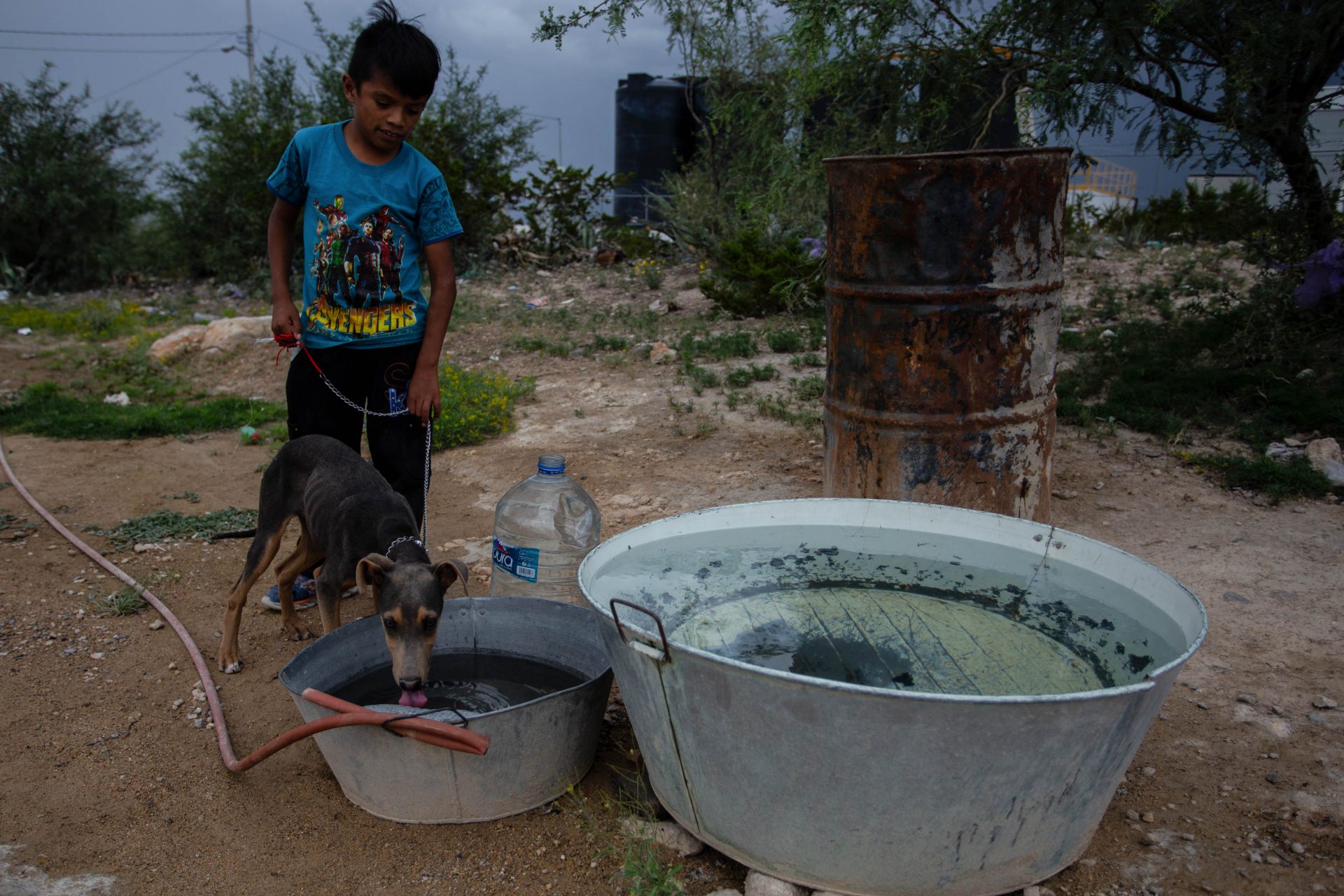
Escazú’s first step in Mexico: access to environmental information
Civil society organisations played a vital role in promoting the Escazú Agreement. It was they who, some years ago, promoted the creation of an instrument for Latin America and the Caribbean that would focus on compliance with the 1992 Principle 10 of the Rio Declaration on Environment and Development, which states that everyone must have access to information, participate in decision-making and access to justice in environmental matters. For this, the Aarhus Convention was taken as an example, which European countries adopted in 1998.
Biologist Olimpia Castillo, from Communication and Environmental Education, recalls that it was during the 2012 United Nations Sustainable Development Conference, known as Rio + 20, when the creation of a treaty for Latin America and the Caribbean was promoted. It took six years for what is formally the Regional Agreement on Access to Information, Public Participation and Access to Justice in Environmental Matters in Latin America and the Caribbean to be finalised, in March 2018. It became better known as the Escazú Agreement, after the city in Costa Rica where it was adopted.
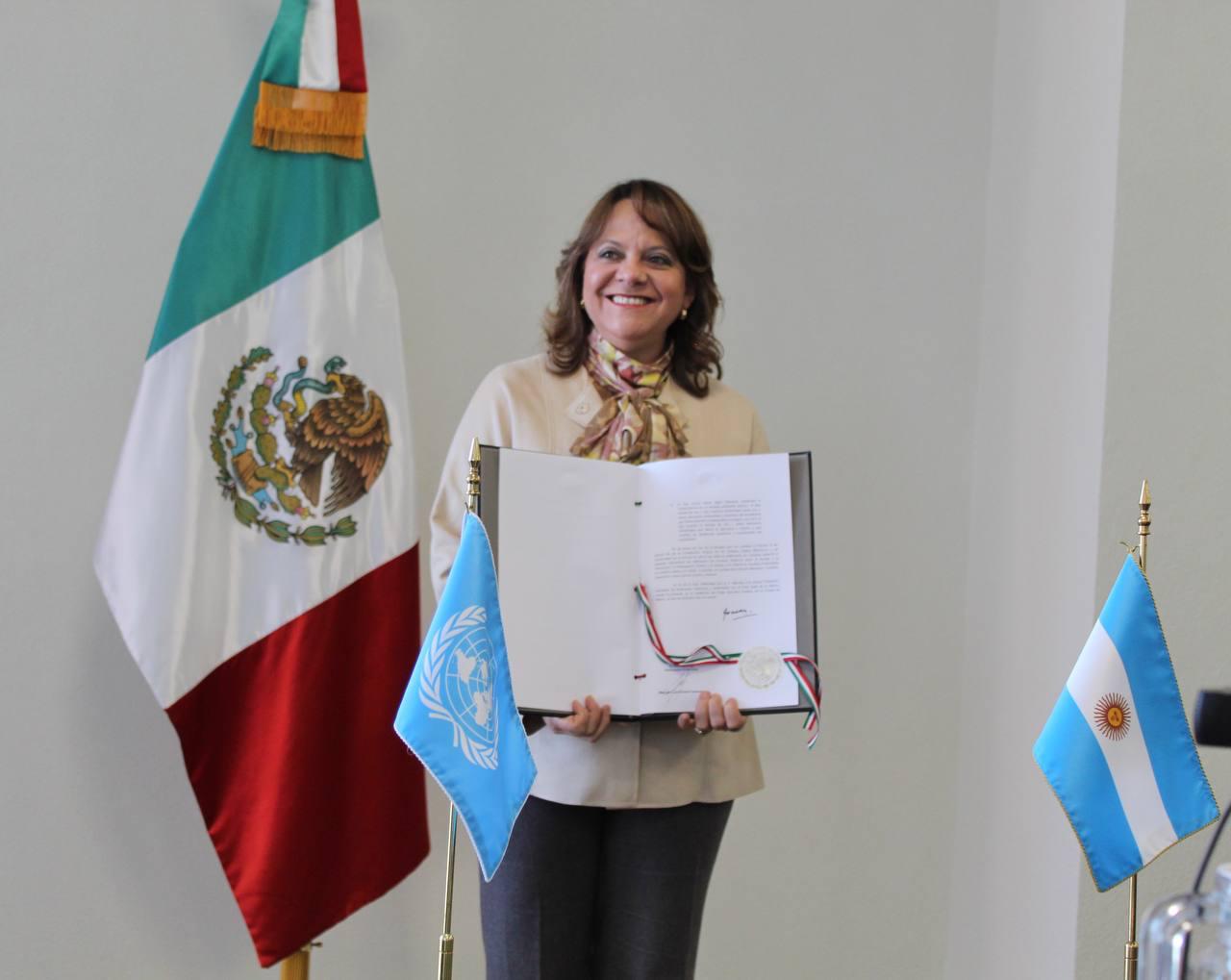
In countries like Peru, Chile or Paraguay, the business and political sectors lobbied for Escazú not to prosper. In Mexico that did not happen. Members of civil society that promoted the treaty agree that ratification in the country took two years due to the change in public administration and the health emergency caused by the COVID-19 pandemic.
In Mexico, in addition to the civil society organisations, undersecretary of foreign relations, Martha Delgado, promoted the ratification of Escazú. Before entering public office, Delgado was part of the civil society-led movement that pushed the existence of the agreement.
Today, it is the same civil organisations that promoted the agreement that, together with the ministry of foreign relations, evaluate and monitor Mexico’s progress in environmental law enforcement with respect to the provisions of Escazú.
A first diagnosis shows that the country has a long way to go in the area of access to information, since it has a relevant law and a National Institute for Transparency, Access to Information and Protection of Personal Data (INAI). Yet, there are still pending concerns to guarantee the right of access to information on environmental issues.
For example, the Escazú Agreement states that it is the State’s obligation to have up-to-date environmental information systems, which include, among other things, a list of contaminated areas by type of pollutant and location. This information is not available in Mexico.
The State must also promote access to environmental information that is in private hands and that relates to concessions, contracts, agreements or authorisations that involve the use of public goods, services or resources.
Xavier Martínez, operational director of the Mexican Center for Environmental Law (CEMDA), recalls that with the entry into force of the Escazú Agreement, Mexico must also build an early warning system related to imminent threats to public health or the environment.
In addition, the country will have to present, at least every five years, a report on the state of the environment. All this information must be disseminated in an accessible form for all people.
The actions that the country must take to guarantee access to information on environmental issues are minimal when compared with the great challenges it faces in complying with the Escazú Agreement on issues of citizen participation, environmental justice and the protection of land and environmental defenders of.
Escazú can rescue the right to participate in Mexico
When the Escazú Agreement was still just a promise, during the signing period in which there was no certainty about its future, it was already invoked to demand rights in Mexican courts.
This happened in at least two cases. One was in a complaint against the construction of a tailings dam by Grupo México, near the community of Bacanuchi, in the state of Sonora. When the lawsuit was filed, the inhabitants of the town located in the north of the country were already well aware of the negative impacts of mining. In 2014, a mine belonging to Grupo México spilled 40 million litres of copper sulfate in the Sonora and Bacanuchi rivers.
In the case of the new tailings dam, the inhabitants of Bacanuchi claimed that it was built without a prior process of information and consultation with the community. Lawyer Victoria Beltrán, coordinator of the legal area of PODER, a civil organization that accompanies the community in their demands, notes this as a key citation of Escazú.
In October 2018, the Supreme Court of Justice of the Nation ruled in favour of the Bacanuchi community, stating that their right to participate in an informed manner in decisions that could affect a healthy environment had been violated. Judges recognised, for the first time in Mexico, the right to prior consultation for a non-indigenous community. Furthermore, they ordered the government to hold a public information meeting to explain the scope of the project. Despite this, Bacanuchi’s fight continues, since the sentence is yet to be fulfilled.
For Beltrán, the Escazú Agreement opens the door to rescue and re-appropriate the right to participation. “A right that at some point vanished”, she says.
An example is the case of the public consultation that was carried out between November and December 2019 for one of the Andrés Manuel López Obrador government’s flagship projects: the so-called Mayan Train, under contruction in the Yucatan Peninsula, southern Mexico. The territory is home to the Mayan jungle, one of the most important tropical forests in Latin America and the Caribbean.
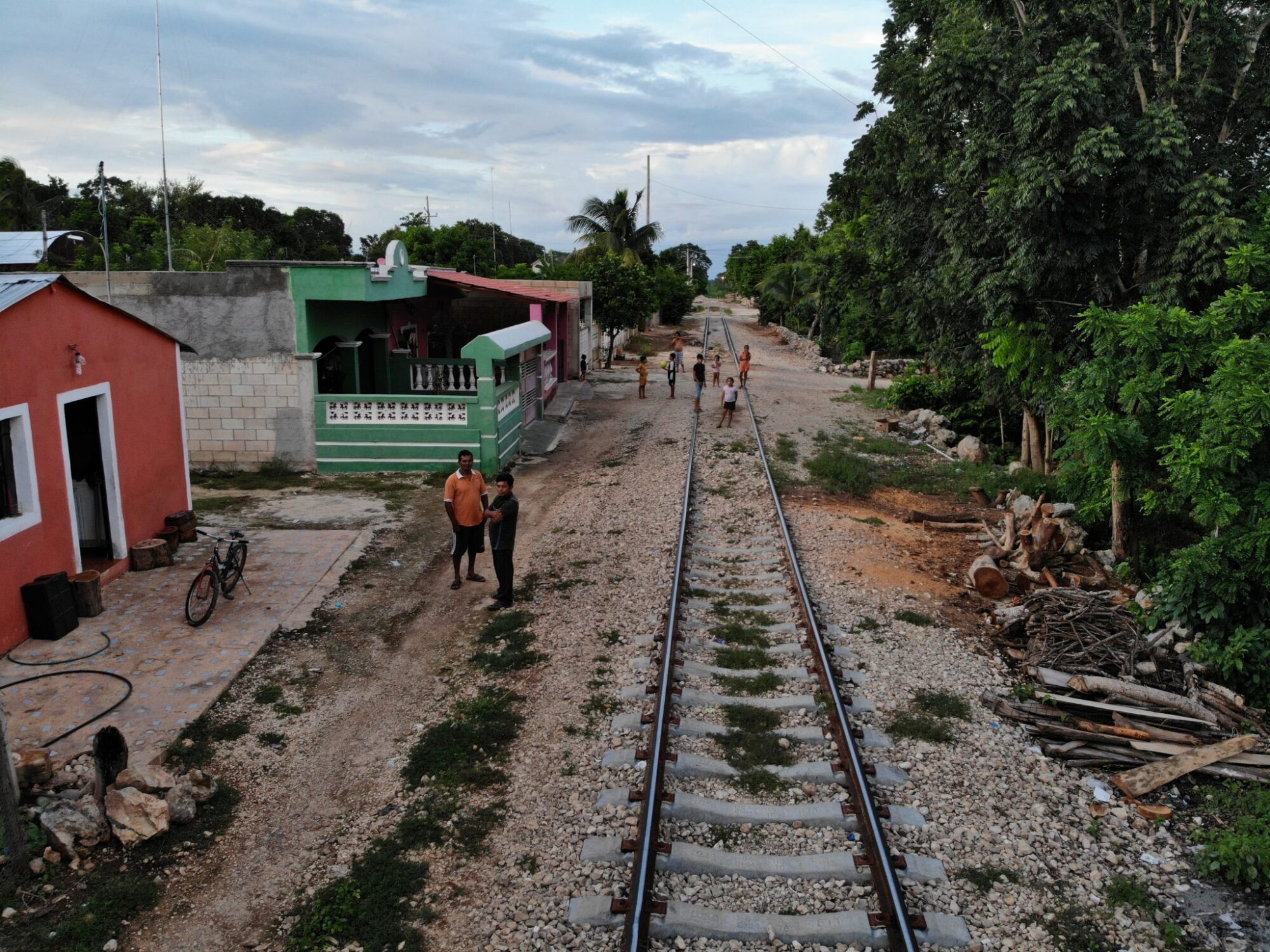
The Mexican Office of the United Nations High Commissioner for Human Rights (UN-DH) warned that the consultation for the Mayan Train did not meet international standards.
the Escazú Agreement will have to help promote participation in spaces where the voice of the communities has traditionally been ignored
Beltrán stresses that, to guarantee the right to participation, it has to be “meaningful, effective and influence decision-making.” To achieve this, she says, the emphasis needs to be on reversing the imbalances of power at the time of implementing the Escazú Agreement.
For the lawyer Xavier Martínez, from CEMDA, the Escazú Agreement will have to help promote participation “in spaces where the voice of the communities has traditionally been ignored, as with the granting of land use change permits, mining concessions or water concessions”.
Better implementation of the Escazú Agreement’s provisions on information and participation could help reduce environmental conflicts, Beltrán says.
The Mayan Train project involves the rehabilitation of existing tracks, the construction of new ones and, above all, the establishment of what has been called “Development Poles”.
Access to environmental justice
The Escazú Agreement proposes “a transformation of environmental governance,” according to organisations that accompany communities in their defense of the environment and their territory, including Fundar, the Center for Analysis and Research.
The entry into force of the treaty, Fundar stressed in a statement last January, is an opportunity for the Mexican state to move forward and show willingness to comply with environmental human rights by “allocating the necessary resources.”
Since the administration of Enrique Peña Nieto (2012-2018), environmental authorities have faced significant budget cuts. That trend has exacerbated under current president Andrés Manuel López Obrador.
If in 2016 little more than 55 billion pesos (US$2.7 billion) were allocated to the entire environmental sector, by 2021 that amount decreased to 31.3 billion pesos ($1.5 billion).
The Federal Attorney for Environmental Protection (Profepa), an agency that monitors compliance with environmental laws, was this year allocated around 742 million pesos (US$37 million). In 2020 it received 793 million pesos ($40 million). This lack of budget has led to “a very diminished (environmental) institutional framework,” says Tomás Severino.
So far during López Obrador’s six-year term, the ministry with the most staff changes is the Ministry of the Environment and Natural Resources (Semarnat). It has had three different heads in two years.
The lack of stability in Semarnat has led to the closure of spaces for citizen participation, among other things. Olimpia Castillo, of Communication and Environmental Education, says the Consultative Councils for Sustainable Development or the Council for Environmental Education “only exist in name.”
If on citizen participation in environmental issues, Mexico is “bad”, in access to environmental justice it is “very bad”, according to Mauricio Limón, a lawyer specialising in environmental law and author of a 2020 book that compares the Escazú and Aarhus agreements.
To give an example, citizens can file complaints with Profepa, but the agency does not inform the complainants of the result of its investigation or its procedures, so it is not possible to challenge the resolution.
In addition, Olimpia Castillo recalls that since 2013 the Federal Law on Environmental Responsibility indicates that the Judicial Power of the Federation must have district courts with special jurisdiction in environmental matters. These courts were to be been established no later than 2015. That did not happen.
Severino points out that Mexico could evaluate the experiences in other countries, such as Chile, where environmental courts are made up of two people with legal training and a specialist in environmental sciences or exact sciences. “This,” he says, “allows for broader visions to solve environmental problems.”
Limón says Escazú should be a “roadmap for access to environmental justice in Mexico” and to have mechanisms that guarantee compliance with the decisions of the courts. That is one of the great unresolved issues the country has in environmental matters: that judicial sentences are not carried out.
The tailings dam in Bacanuchi was built without taking the community’s views into account. So far, the SCJN sentence has not been fulfilled.
Limón also recalls the case of the Laguna del Carpintero, in Tampico, Tamaulipas state, in the north of the country. In 2013, the municipal government promoted the creation of an “Ecological Park”, which would be built with public and private resources. A mangrove was cut down as part of the work, which is prohibited by Mexican law.
Neighbours of the Laguna del Carpintero filed a suit against this work, stating that its execution violated their right to a healthy environment. The case – where the Escazú Agreement was also invoked before it came into force – reached the supreme court. In November 2018, judges ruled that there was environmental damage, but it was left to municipal authorities, who themselves cleared the mangrove, to supervise the restoration works.
The Escazú Agreement would also help to eliminate what in legal terms is known as “the burden of proof”.
Martínez, from CEMDA, explains that in litigation communities are required to demonstrate that, for example, a polluted river damages health or that the arrival of a mine transforms their way of life. As of the entry into force of the Escazú Agreement, that may change, because the burden of proof must be presented by whoever is able to carry out the necessary studies.
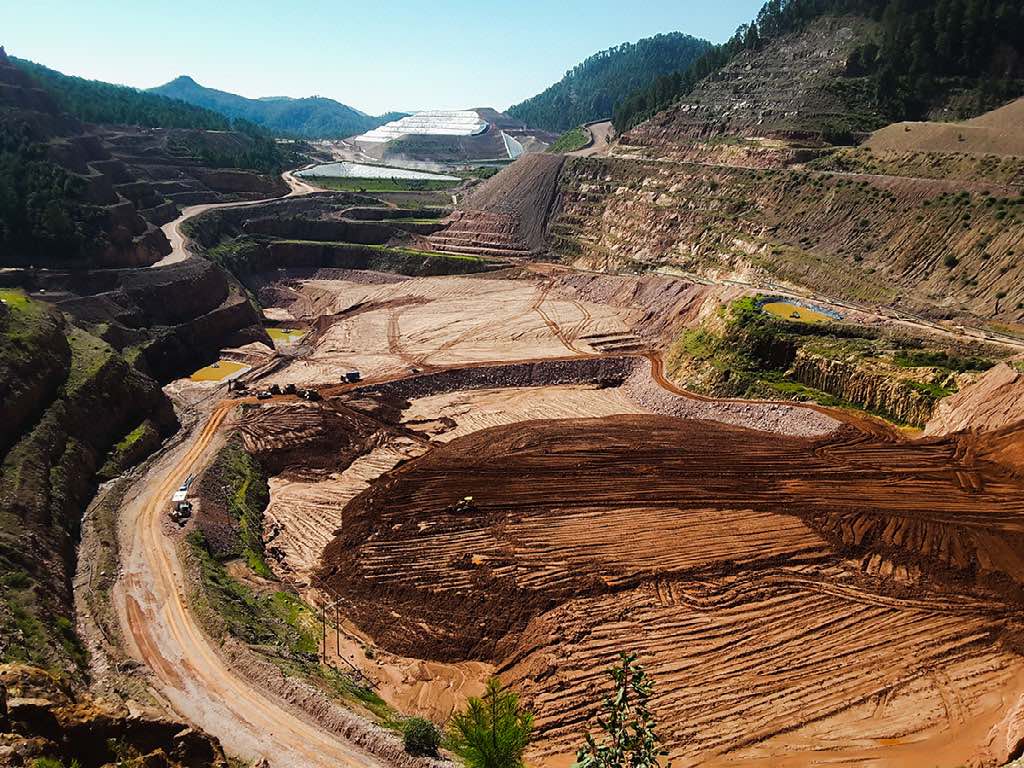
Urgent need to protect the defenders
If there is something that makes the Escazú Agreement innovative, it is that it is the first binding legal instrument that recognises human rights defenders in environmental matters.
It also highlights that states have the obligation to guarantee a safe and conducive environment for the defense of human rights in environmental matters, as well as to investigate attacks and punish those responsible.
In Mexico, numbers of land and environmental defenders began to be recognised in 2015, explains Lucía Velázquez of the Mexican National Autonomous University’s Institute for Ecosystem Research and Sustainability. For seven years, she has been investigating and documenting attacks against defenders of the environment and their territory.
Between 1995 and 2019, Velázquez counted 147 environmental defenders killed in Mexico. In that same period, it documented 503 of attacks.
By 2020, 18 murders of land and environmental defenders were recorded, according to a report by the Mexican Center for Environmental Law (CEMDA). In the first three months of 2021, there were reports of six murders of defenders, including that of Carlos Márquez, in the Sierra de Guerrero.
A 2020 CEDMA report on the situation of environmental human rights defenders in Mexico also mentioned that of the 65 attacks documented that year, nine involved stigmatisation by Mexican state authorities, including the president himself, who on more than one occasion made public statements against frontline defenders.
18
environmental defenders were killes in 2020
For Martínez, the construction of a safe and conducive environment for environment and land defenders is necessary to stop their stigmatisation and criminalisation, as is their meaningful participation in decision-making.
Another urgent measure is to thoroughly review the Protection Mechanism for Human Rights Defenders and Journalists, which has existed since 2012 and depends on the Ministry of the Interior. In fact, this instrument has not been an effective tool to protect and prevent murders.
The story of Julián Carrillo, a Rrámuri indigenous who reported people outside his community of Coloradas de la Virgen in Chihuahua state cutting down his forests to plant poppies is a case in point.
Julián and other inhabitants of Coloradas de la Virgen received threats. For this reason, in 2014 four people from this community located in the Sierra Tarahumara, including Julián, joined the Mechanism for the Protection of Human Rights Defenders and Journalists.
The protection granted to Julián Carrillo was limited to giving him a satellite phone and providing him with a police chaperone during travel outside the community. Those measures did not work. Julián was murdered on October 24 2018. Threats against the inhabitants of Coloradas de la Virgen continued and many were even forced to leave their homes.
“The mechanism leaves much to be desired,” says researcher Lucía Velázquez, “the defenders are not adequately monitored. It has not served to protect them ”.
Based on the Escazú Agreement, Martínez says that “the Mexican State will have to transform structures, such as the mechanism, and budgets to guarantee the protection of defenders”.
Lawyer Limón highlights that of all the issues that must be worked on from the Escazú Agreement, the protection of environmental defenders is “the most delicate and urgent because not only is the environmental or socio-environmental issue at stake, but democracy, the rule of law and the lives of individuals and communities”.
Camila Zepeda, general director of global issues of the undersecretary of foreign relations, says there have been meetings with the interior ministry, the attorney general’s office, attorneys and other actors to diagnose the mechanism.
In fact, Zepeda assures that since the end of last January, after Mexico deposited its ratification of the Escazú Agreement with the United Nations, it began to have working groups within different agencies build a roadmap for its implementation.
“The Escazú Agreement has the potential to give Mexico better tools to update its institutions and regulatory instruments to deal with the environmental and climate crises that are already present,” insists Tomás Severino.
For Olimpia Castillo, the first step to make the Escazú Agreement work is to know its content and potential. “Outside of the environmental sphere it is not known. We have to make it known and help people take ownership of the agreement”.
In the Las Conchitas community, in San Miguel Totolapan, Guerrero, they know nothing about the Escazú Agreement. The nearly 40 inhabitants of the place know only that to defend the forest and their territory, their municipal commissioner, Carlos Márquez, was assassinated.
After Márquez’s murder, officials from the Protection Mechanism for Human Rights Defenders and Journalists arrived in Las Conchitas. They heard Carlos’s widow say that she would not leave her home, that she would stay in Las Conchitas.
The woman and her children asked the same thing her husband and other inhabitants of communities in the region requested months ago: that the federal and state agencies do their job, that they not be left alone in their fight to defend their territory and stop logging in its forests.
This article was orignally published by the journalistic project Land of Resistants, and is reproduced here with permission
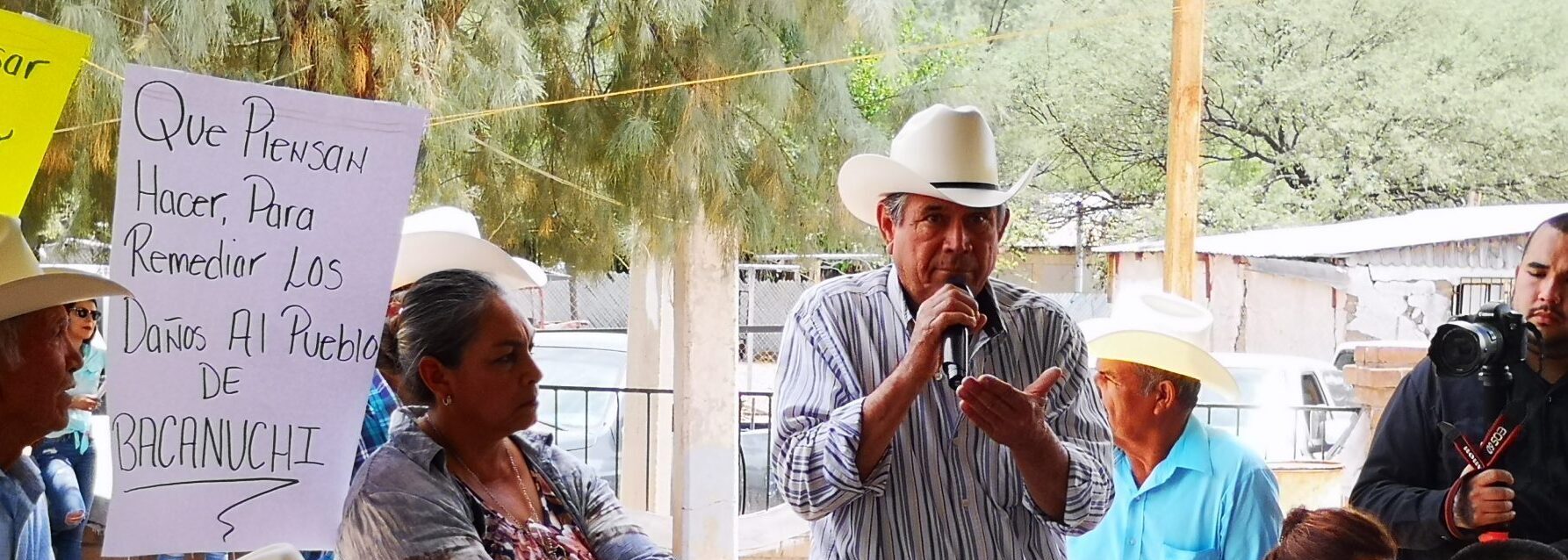
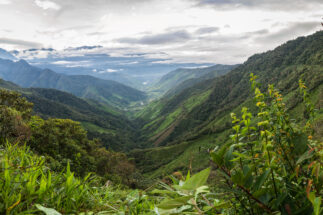


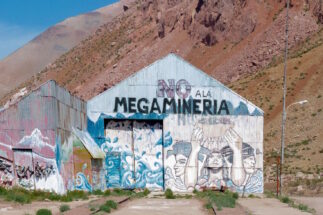

![Two fishermen on the Brahmaputra, a river that winds through four countries [image by: Sumit Vij]](https://dialogue.earth/content/uploads/2018/04/Brahmaputra-300x200.jpg)
